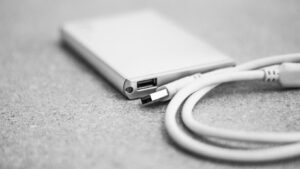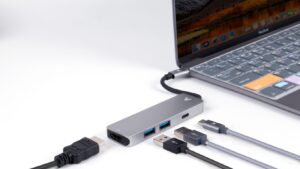USB Hub Connection Diagram
 In today’s tech-driven world, USB hubs have become indispensable for expanding the connectivity options of our devices. Whether it’s for charging multiple gadgets or connecting peripherals like keyboards and mice, understanding how to set up a USB hub can make life significantly easier.
In today’s tech-driven world, USB hubs have become indispensable for expanding the connectivity options of our devices. Whether it’s for charging multiple gadgets or connecting peripherals like keyboards and mice, understanding how to set up a USB hub can make life significantly easier.
A clear and concise USB hub connection diagram can demystify the process, ensuring users can seamlessly integrate various devices without hassle. This article will guide you through the essentials of USB hub connections, helping you optimize your workspace and enhance productivity.
Understanding USB Hubs
USB hubs function as multipliers for USB ports, enabling users to connect multiple peripherals like keyboards, mice, and external drives to a single USB port on a computer. These hubs can increase the number of available ports, making device management more efficient.
Types of USB Hubs
USB hubs come in various forms:
- Powered Hubs: These hubs include an external power source, allowing them to support high-power devices like external hard drives.
- Unpowered Hubs: These hubs draw power directly from the computer’s USB port and support low-power devices such as keyboards and mice.
- USB 2.0 vs. USB 3.0 Hubs: USB 3.0 hubs offer faster data transfer rates (up to 5Gbps) compared to USB 2.0 hubs (up to 480Mbps).
Benefits of Using USB Hubs
Using USB hubs offers significant advantages:
- Expanded Connectivity: A single port can connect multiple devices, including printers, flash drives, and webcams.
- Improved Workspace Organization: Hubs help reduce cable clutter by consolidating connections.
- Power Distribution: Powered hubs ensure devices receive adequate power, improving performance and reliability.
Key Features to Look For
When selecting a USB hub, consider the following features:
- Number of Ports: Determine the number of peripheral devices to select a hub with an adequate number of ports.
- Power Source: Decide between powered and unpowered hubs based on device power requirements.
- Data Transfer Speed: Choose between USB 2.0, USB 3.0, or newer standards for optimal data transfer rates.
- Durability and Build Quality: Opt for hubs with robust construction to ensure longevity and reliability.
Common Usage Scenarios
USB hubs are beneficial in various scenarios:
- Office Environments: They accommodate multiple peripherals, enhancing workflow efficiency.
- Home Offices: Hubs provide additional connections for personal devices, maintaining organization.
- Travel: Compact hubs offer travelers extended connectivity options for laptops and other portable devices.
Understanding the different types and benefits of USB hubs helps users choose the right hub for their specific needs, optimizing both capacity and performance.
Types Of USB Hub Connection Diagrams
A clear connection diagram is essential for understanding different USB hub configurations. This section will explore the types of connection diagrams you can use for powered vs. unpowered hubs and daisy chain connections.
Powered vs. Unpowered Hubs
Powered USB hubs, essential for devices requiring more power like external hard drives, feature a connection diagram showing an external power supply. Unpowered hubs, suitable for low-power devices like keyboards and mice, don’t require an external power source.
- Powered USB Hub Connection Diagram: Includes a power adapter connected to the hub along with multiple device connections.
- Unpowered USB Hub Connection Diagram: Displays device connections without an additional power source.
Understanding these diagrams helps ensure devices get adequate power.
Daisy Chain Connections
 Daisy chaining allows multiple USB hubs to connect in sequence, expanding the number of available ports. This configuration is useful in scenarios needing numerous peripheral connections. Daisy Chain Connection Diagram:
Daisy chaining allows multiple USB hubs to connect in sequence, expanding the number of available ports. This configuration is useful in scenarios needing numerous peripheral connections. Daisy Chain Connection Diagram:
Shows the first USB hub connected to a computer, followed by additional hubs connected sequentially. Using these diagrams ensures optimal setup and follows USB standards. Understanding these diagrams simplifies setting up a workspace or network, leading to increased productivity.
Understanding USB hub connection diagrams is crucial for optimizing device connectivity and enhancing productivity. By simplifying the setup process and addressing common issues, users can ensure smooth operation in various environments. Whether in an office, home, or on the go, selecting the right USB hub and following clear diagrams can streamline device management and reduce workspace clutter. Embracing the benefits of USB hubs, from expanded connectivity to efficient power distribution, empowers users to make informed choices and achieve a more organized and productive workspace.



